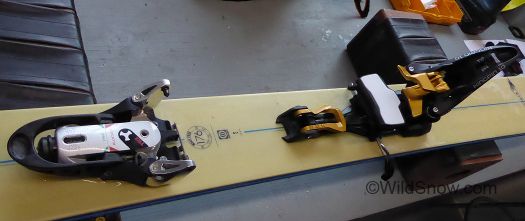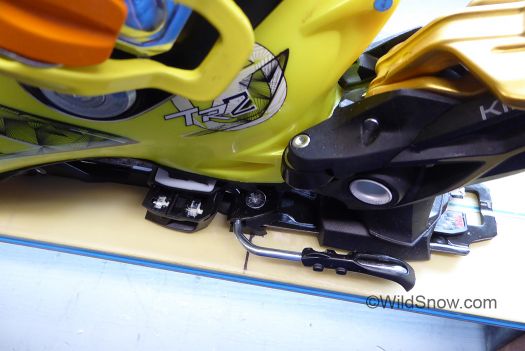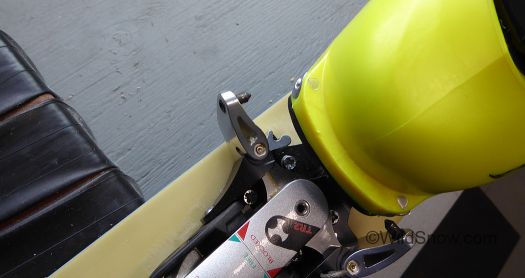Y’all asked, I had to do it. Again, broken promises as in “I’d never try that!” This is simply a proof of ski touring binding concept. Please do not think you can pair these two bindings for a viable daily driver. In this configuration the actual release forces are unknown, and with this boot (an early Scarpa effort in cooperation with Trab) the side release at the heel bound up with the Kingpin rollers, though it did release to some degree. This does what many of you have asked about. It releases to the side at both toe and heel. More, you get what’s essentially an alpine heel unit (though you still have to step into a “tech” type of toe first, with the usual alignment fiddling). To the best of my knowledge the only other binding that releases fully to the side at both toe and heel is the “Knee” brand alpine binding. Check out the FrankenTrab, is this the future?
(Note, by “release” at toe I mean full lateral release similar to an alpine binding. Classic tech bindings do release somewhat at the toe, but are “blocked” from full lateral release of the toe perpendicular to the ski. Some “not classic” tech bindings do have adjustable release perpendicular at the toe, e.g., Vipec and Trab.)
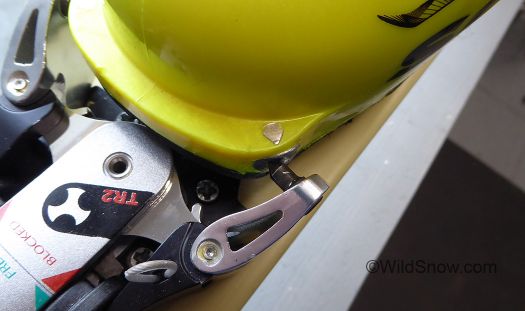
Trab TR2 toe opens to the side in a way that allows the pins to ride out of the toe fittings. In other words, you can move the heel of the boot to the side with elasticity and return-to-center. This in turn allows the Kingpin heel to release to the side, unlike our experiment with using the Vipec toe. Both Trab and Vipic also have a mode that releases the toe directly perpendicular to the ski, as with alpine bindings. Key is we want a ski touring binding that does both: releases to the side at the toe — and the heel. This configuration does just that.
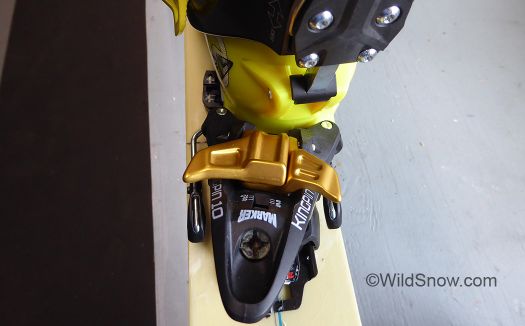
Heel of boot moves easily to the side at the toe fittings, allowing the Marker Kingpin side release at the heel.
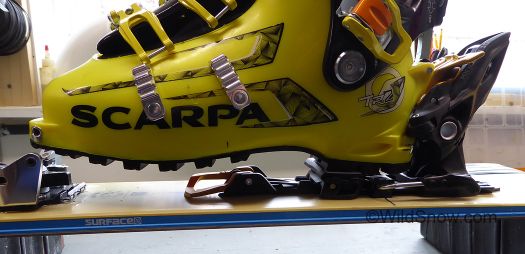
Marker heel places a large amount of force downward on the boot heel, which cantilevers the boot over the heel AFD. This created quite a bit of resistance to heel lateral release, an example of how this is only an experimental configuration.
All this begs the question, could variations of the tech binding provide the “safest” backcountry skiing binding in terms of knee tissue and leg bone protection? Perhaps the Marker guys need to make a trip to Bormio (Trab, Italy). Oh, and yes, I did ski them.
WildSnow.com publisher emeritus and founder Lou (Louis Dawson) has a 50+ years career in climbing, backcountry skiing and ski mountaineering. He was the first person in history to ski down all 54 Colorado 14,000-foot peaks, has authored numerous books about about backcountry skiing, and has skied from the summit of Denali in Alaska, North America’s highest mountain.

